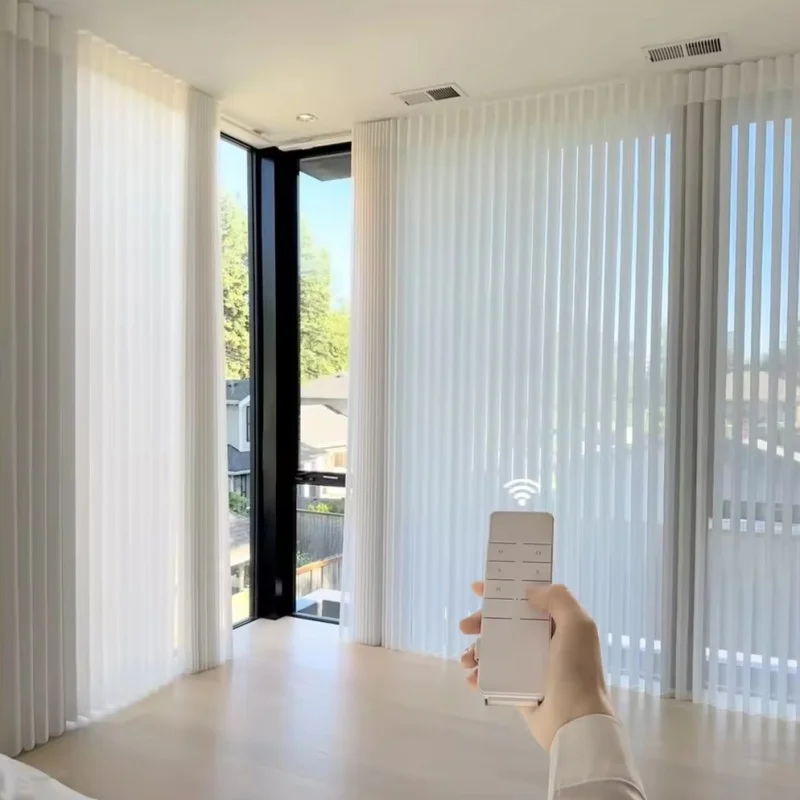Vertical blinds can be a stylish and functional addition to any home, offering privacy and light control. However, like any window treatment, they can encounter problems over time. If you’re dealing with broken vertical blinds, don’t worry! Many repairs can be done with a little effort and the right tools. In this guide, we’ll explore various DIY repair tips for vertical blinds, ensuring you can restore them to their former glory.
Understanding Vertical Blinds
What Are Vertical Blinds?
Vertical blinds consist of long slats that hang vertically and can be adjusted to allow varying amounts of light into a room. They are typically made from fabric, vinyl, or aluminum and are a popular choice for large windows and sliding glass doors. One of the main advantages of vertical blinds is their ability to be drawn to the side, providing unobstructed views when opened. However, their vertical design can make them susceptible to wear and tear.
Common Issues with Vertical Blinds
Over time, vertical blinds may face several issues, including broken slats, tangled cords, or malfunctioning mechanisms. Slats can become warped or damaged due to exposure to sunlight or humidity. Cords may fray or become tangled, preventing the blinds from opening and closing smoothly. Identifying the specific problem is the first step in determining the appropriate repair method.

Assessing the Damage
Inspecting Your Vertical Blinds
Before attempting any repairs, take a close look at your vertical blinds. Check each slat for damage, such as cracks or tears, and examine the headrail—the mechanism that holds the slats in place. Look for signs of wear on the cords and any other components. Taking inventory of the damage will help you understand what needs fixing and what tools or materials you’ll require.
Determining the Type of Vertical Blinds
Vertical blinds come in various styles and materials, each requiring different repair techniques. Fabric blinds may need sewing for minor tears, while vinyl or aluminum blinds might require replacement slats. Knowing the type of vertical blinds you have will guide you in selecting the right repair method. If you’re unsure, check the manufacturer’s instructions or look for identifying labels on the blinds.
Repairing Broken Slats
Replacing a Damaged Slat
One of the most common issues with vertical blinds is damaged or broken slats. If you find a slat that is cracked or warped, replacing it is often the best solution. Most home improvement stores carry replacement slats that match popular styles and colors.
- Remove the Damaged Slat: Start by unclipping the damaged slat from the headrail. This usually involves sliding it out of the clip or bracket holding it in place. Be gentle to avoid damaging adjacent slats.
- Measure and Cut: If you can’t find a pre-cut replacement, measure the length of the slat and cut a new piece to size using a utility knife or scissors, depending on the material.
- Attach the New Slat: Slide the new slat into the headrail’s clip. Ensure it hangs straight and is secure. Once attached, check that it moves freely with the other slats when you open and close the blinds.
Repairing Minor Tears
For minor tears in fabric vertical blinds, sewing may be a viable solution. Here’s how you can repair a small tear:
- Gather Your Materials: You’ll need a needle, thread that matches the color of the fabric, and scissors.
- Prepare the Slat: Remove the slat from the headrail and lay it flat on a clean surface. Gently pull the edges of the tear together.
- Sew the Tear: Using a simple running stitch or backstitch, sew the torn edges together. Ensure the stitches are close enough to hold the fabric securely but not so tight that they cause the fabric to pucker.
- Reattach the Slat: Once repaired, reattach the slat to the headrail and check that it moves properly with the other slats.
Fixing the Mechanism
Troubleshooting the Headrail
The headrail is crucial for the function of vertical blinds, as it controls the opening and closing mechanism. If your blinds are stuck or won’t rotate, there may be an issue with the headrail.
- Inspect the Headrail: Carefully examine the headrail for any obstructions, such as dust or debris that may be preventing the mechanism from functioning smoothly.
- Lubricate Moving Parts: If the mechanism feels stiff, apply a small amount of silicone spray or a similar lubricant to the moving parts. Avoid using oil-based products, as they can attract dirt.
- Check the Wand Control: If your vertical blinds use a wand to control the rotation of the slats, ensure that it is securely attached to the mechanism. If it’s loose, tighten it as necessary.

Replacing a Broken Mechanism
If the headrail is broken beyond repair, you may need to replace it. Here’s how:
- Remove the Old Headrail: Carefully detach the headrail from the wall or window frame. This typically involves unscrewing it from its brackets.
- Purchase a New Headrail: Visit a home improvement store or order a compatible headrail online. Ensure it matches the size and style of your existing blinds.
- Install the New Headrail: Follow the manufacturer’s instructions to install the new headrail. Ensure it is securely mounted and that all slats are properly attached to the mechanism.
Addressing Tangled Cords
Untangling the Cords
Tangled cords can be frustrating and prevent your vertical blinds from functioning correctly. Here’s how to untangle them:
- Remove the Slats: If the cords are severely tangled, it may be easier to remove the slats from the headrail temporarily. This will give you better access to the cords.
- Carefully Untangle: Gently pull apart the tangled cords, being careful not to apply too much pressure. If necessary, use a pair of scissors to cut away any frayed sections, but only if you’re confident you can reassemble everything afterward.
- Reattach the Slats: Once untangled, reattach the slats to the headrail, ensuring they move smoothly.
Replacing Frayed Cords
If the cords are frayed or damaged, they may need to be replaced. Follow these steps:
- Remove the Slats and Headrail: Detach all slats and remove the headrail from the wall to access the cords.
- Measure New Cords: Purchase new cord material that matches the original in thickness and length. Cut the new cords to the required length.
- Re-thread the Cords: Follow the threading path of the original cords to replace them. This may require consulting the manufacturer’s instructions or a diagram for guidance.
- Reassemble Everything: Once the new cords are in place, reattach the headrail and slats, checking that everything operates smoothly.
Maintaining Vertical Blinds
Regular Cleaning and Care
Maintaining your vertical blinds can help extend their lifespan and keep them looking their best. Regular cleaning is essential, as dust and grime can accumulate and cause the blinds to become discolored or damaged.
- Dust Regularly: Use a soft cloth or a duster to wipe down the slats. For fabric blinds, a vacuum with a brush attachment can effectively remove dust without damaging the material.
- Deep Clean When Necessary: Depending on the material, vertical blinds can usually be washed. For fabric blinds, check the care label for washing instructions. Vinyl or aluminum blinds can typically be wiped down with a damp cloth and mild detergent.
- Check for Damage: While cleaning, take the opportunity to inspect your blinds for any signs of damage or wear. Addressing minor issues promptly can prevent them from worsening.
Tips for Long-Lasting Blinds
To ensure your vertical blinds remain functional and attractive for years to come, consider these tips:
- Avoid Excessive Pulling: Be gentle when opening and closing the blinds. Excessive force can lead to broken slats or a malfunctioning mechanism.
- Adjust for Weather: If you live in an area with extreme temperatures or humidity, consider adjusting your blinds to minimize exposure. This can help prevent warping or other damage.
- Store Properly During Long Absences: If you plan to be away for an extended period, consider removing the blinds and storing them safely. This can protect them from dust and potential damage.

When to Seek Professional Help
Recognizing Limitations
While many vertical blind repairs can be handled as DIY projects, there are times when professional help is advisable. If you encounter extensive damage or find that repairs are beyond your skill level, it may be best to consult a professional.
- Severe Damage: If multiple slats are damaged or the headrail is broken, it may be more cost-effective to replace the entire set of blinds rather than attempting to fix them.
-
Complicated Mechanisms: Some vertical blinds have complex mechanisms that may require specialized knowledge or tools to repair. If you’re unsure, it’s better to seek expert assistance.








